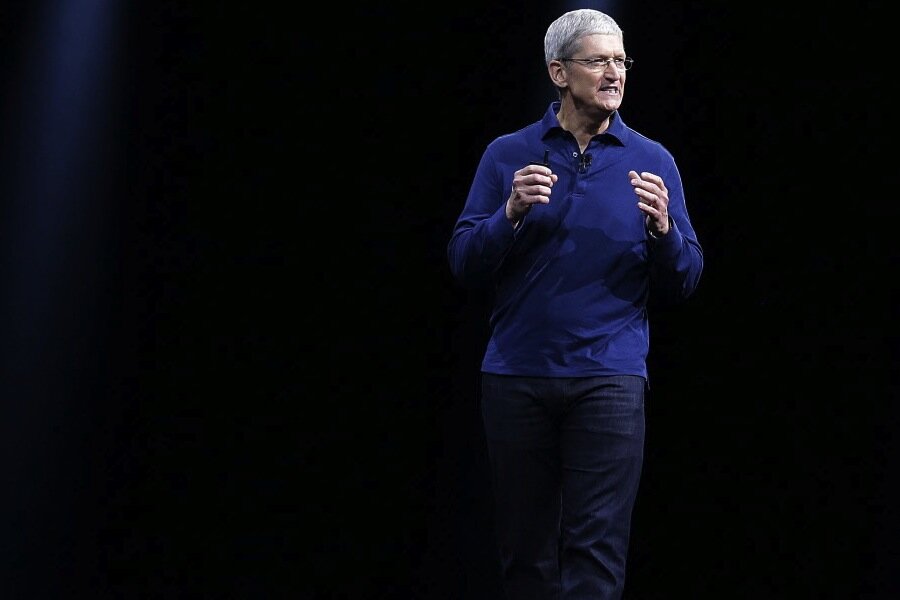Apple's female hires have doubled. Is diversify push working?
Loading...
Apple hired more women and people of minority backgrounds than ever this year – but you wouldn’t know it to look at their ratios.
The company’s latest diversity data shows that in the first months of 2015, 65 percent more women were hired than last year, but these new hires only bumped Apple’s total percentage of female employees up by one point. The data reflects the uphill battle women face in the tech industry, despite concerted efforts by companies to diversify.
Despite modest changes in the company’s male-female ratio, Apple CEO Tim Cook said in a statement that progress is progress. He said almost half of 2015’s new hires have been either female, Black, Hispanic, or Native American.
“We are proud of the progress we’ve made, and our commitment to diversity is unwavering,” Mr. Cook said. “But we know there is a lot more work to be done.”
The demand placed on Silicon Valley tech companies to break away from the industry standard of filling its offices with white and Asian males is often complicated by women’s reluctance to apply for jobs in the field.
OpenNews director and Source editor Erin Kissane has suggested employers can attract more applications from women by tweaking the wording of job descriptions to appear more inclusive. She asked Twitter users what kinds of job descriptions alienated them, and many female respondents said any emphasis on dominance or aggression – traditionally seen as male characteristics – made them hesitant to apply.
Meanwhile, another woman is using Twitter to undermine the stereotype of engineers being male. Twenty-two-year-old Isis Wenger started the hashtag campaign #iLookLikeAnEngineer after appearing in an ad for OneLogin, the tech consulting firm where she works, and being told she did not look like an engineer.
One Facebook commenter criticized her smile, saying the company would attract more women if, in the ad, she wore “a warm, friendly smile rather than a sexy smirk.”
Ms. Wegner responded to backlash against the ad in a Medium post.
“News flash: this isn’t by any means an attempt to label ‘what female engineers look like.’ This is literally just ME, an example of ONE engineer at OneLogin. The ad is supposed to be authentic. My words, my face, and as far as I am concerned it is,” she wrote.
But gender is only one front on which Apple and other tech companies have been urged to diversify; the other is race. Cook said this year Apple has hired 50 percent more Black employees and 66 percent more Hispanic employees than it did last year, earning the approval of civil rights leader Rev. Jesse Jackson, who called the increase “solid, measurable progress."
Mr. Jackson also praised Apple’s peer tech companies Hewlett-Packard and Intel for making similar strides.
"This is a watershed week for propelling the tech diversity and inclusion agenda forward," Jackson said in a statement. "HP broke new ground by appointing two African Americans to each of its two new companies (HP Enterprise and HP Inc.); Intel reported significant and measurable progress in their diversity hiring in perhaps the most aggressively transparent report provided by any company in the industry. Now Apple has leaned in."
But Reverend Jackson also encouraged companies to take diversity efforts further and become even more transparent about hiring statistics by releasing more information than just that which the federal government requires, to give “a much clearer picture of what companies are actually doing."






